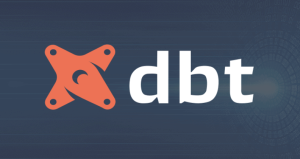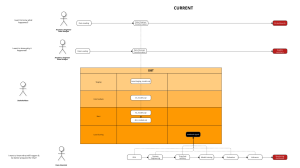There are many applications of data science in the field of finance. Let’s discuss these below.
1. Risk Analytics
Every company has some risk while doing business, and it has become essential to analyze the risk before taking any decision. Analyzing the threat has become crucial for large companies for their strategic decision making and is called Risk Analytics. For Business intelligence and data science in Finance, Risk Analytics has become vital areas.
A company can increase the security and trustworthiness of the company using risk analytics of data science. Data is the core of Risk Management and Risk Analysis because it measures the gravity of the damage and multiplies it with the frequency of loss. The knowledge of problem-solving, statistics and maths is essential in the field of Risk Management for any professional.
Raw Data majorly consists of unstructured data which cannot be inserted into a standard excel spreadsheet or a database. Data science plays a significant role in this using their frameworks to analyze the data.
A company faces various kinds of risk which can originate from the market, credits, competitors, etc. The first step in managing the risk is identifying the threat. After that, monitoring and prioritizing the risk is essential.
A company can use massively available data like financial transactions and customer information using which they can create a scoring model and optimize the cost. This is an essential aspect of risk analysis and management which is used to verify the creditworthiness of a customer. Many companies now employ data scientists to analyze the creditworthiness of customers using machine learning algorithms to analyze the transactions made by customers.
2. Real-Time Analytics
In the earlier period, data were processed and analyzed in batches which means one by one and not real-time. It had a huge disadvantage of data being old by the time it was processed and analyzed. The decisions taken on historical data will not be very helpful or accurate.
Many various industries started having a problem because they require real-time data to gain insights about present circumstances. However, now it is possible to access the data with minimum delay due to the development of dynamic data pipelines and advancements in technology.
Data Science has now become a very crucial part of Finance and Financial Institutions to keep track of all financial attributes, credit scores and transactions without any issue of latency. Read about the contribution of Data Science to the banking industry.
3. Consumer Analytics
Many financial institutions have consumer personalization as their major operation. With the help of data scientists, companies can gain insight into the behaviour of consumers in real-time with the help of real-time analytics to make better strategic business decisions. Data Science is being used in many financial institutions such as insurance companies to understand the consumer to reduce losses by eliminating below zero customers, to increase cross-sale and to measure the lifetime value of a customer.
4. Customer Data Management
Data is everything, and the financial institution needs customer data for processing and analyzing the information. The functioning of financial institutions has completely revolutionized after the introduction of big data in the world of data science. Large numbers of transactions and social media have contributed a lot to the variety and volume of data.
There are mainly two types of data available, which are Structured Data and Unstructured Data. It is effortless to handle, process and analyze the structured data as it is already in a specific format. But in the case of Unstructured Data, It is not as smooth as structured data to process and analyze it. Various top data science tools are used to process and handle unstructured data.
One of the most important aspects of Big Data is Business Intelligence which is extracted by using machine learning to gain insight about the customers and their behaviour. Meaningful insights from data can be generated using various tools such as text analytics, data mining, Natural Language Processing (NLP) and many more. A thorough analysis is conducted on the data of customers using machine learning algorithms to analyze the changes and trends in the financial market and values.
5. Personalized Services
Personalized services are a great way for the financial institution to build a good relationship with its customers and increase their sales by offering them what they are interested in. Insights are generated and analyzed the customer information related to the interaction by financial institutions by employing many kinds of tools and techniques. Natural language processing and speech recognition based software is handy to financial institutions nowadays for better communication with consumers.
Actionable insights are gained, and the needs of the customers are understood from the information provided by customers to the financial institution, which leads to higher profit to them. Those insights are also used to provide better services, and business strategies are optimized according to each customer.
6. Financial Fraud Detection
One of the major concerns for financial institutions is a fraud. As the number of transactions is increasing, it is also increasing the chances of fraud. But now, financial institutions can keep track of scams and frauds in a better way by using the analytical tools to analyze the big data.
Credit card fraud will remain at the top of the list of financial scams. There has been an improvement in the detection of these types of fraud because of the development of algorithms. Anomaly detection is much easier now with higher accuracy. The losses from the scams are promptly minimized by the detection alert received at real-time by the companies about the anomalies in financial purchases.
Unusual patterns in trading data are identified using various machine learning tools. Financial institutions are alerted, and the anomalies are taken for further investigation. There are many other types of fraud also which are detected by understanding the pattern of the data which seems to be suspicious and many insurance companies are using several clustering algorithms to segregate the data and understand the cluster pattern of information.
7. Algorithmic Trading
One of the essential parts of financial institutions is Algorithmic Trading which is used to compute complex mathematical formulas at lightning speed which helps in devising new trading strategies by financial institutions. Big Data has wholly revolutionized Data Science and Algorithmic Trading in a much bigger way which has lead to a complete change in the functioning of the industry.
Massive amount of data are streamed which are processed through algorithmic trading, and a data model is produced which describe the information about the data streams. By the understanding of massive datasets in a better way, financial institutions can make better predictions for the future market, and that is the aim of the analytical engine.
- What the heck is data analytics? Explain it like I’m five. - June 8, 2022
- Best Practices for Managing Data Access to BigQuery - October 11, 2021
- How PE firms can turn data science into a competitive advantage - October 11, 2021



